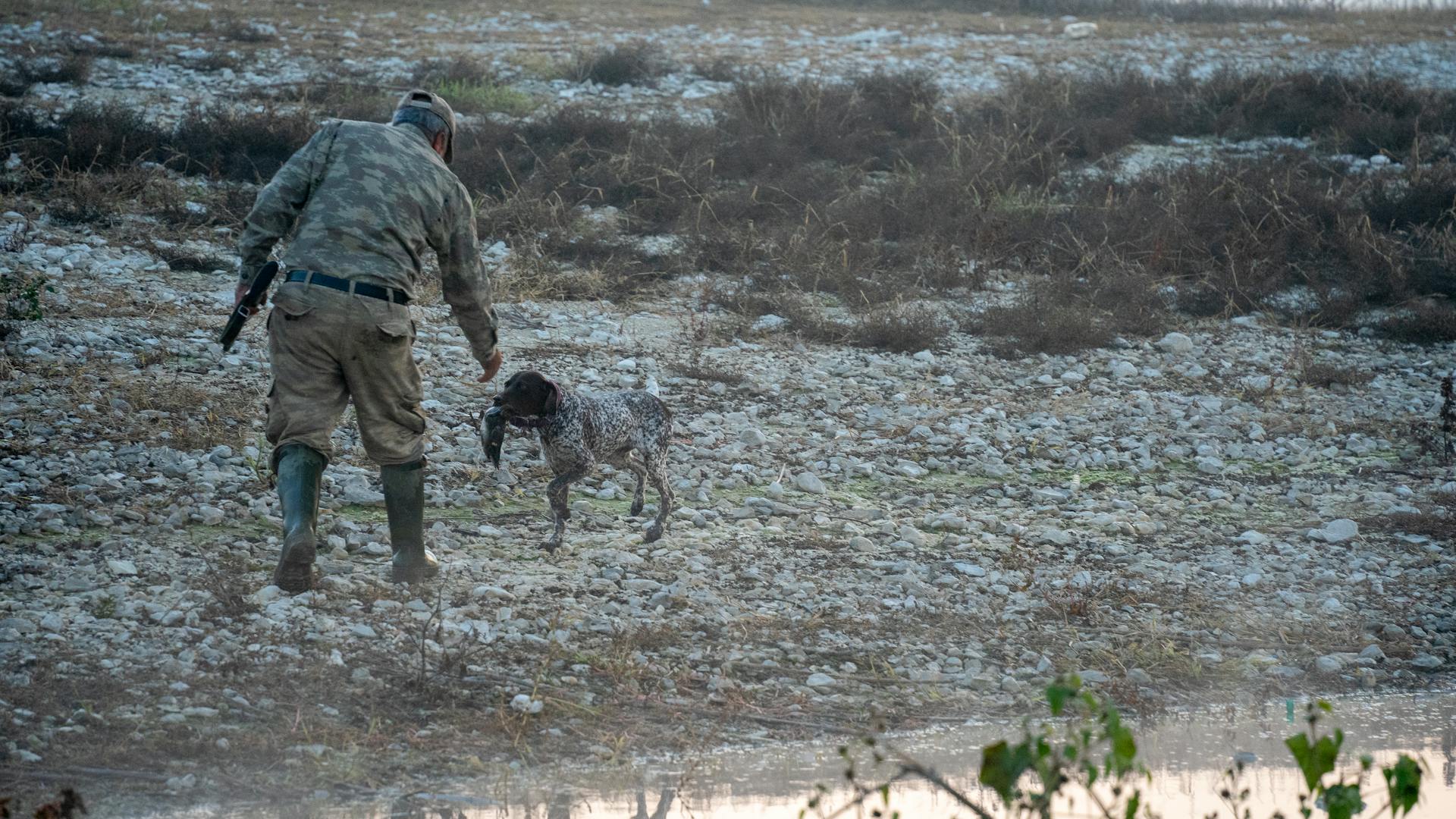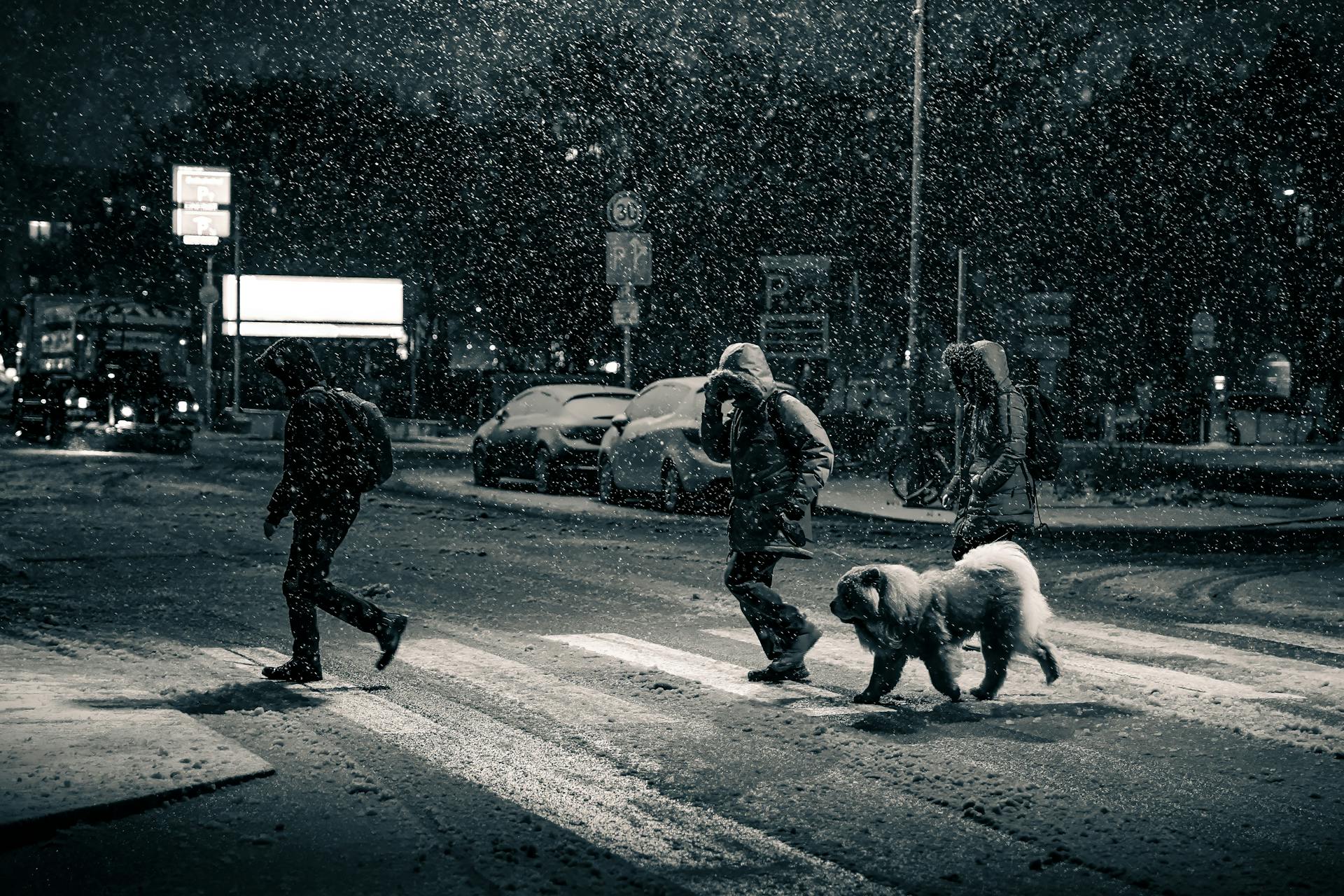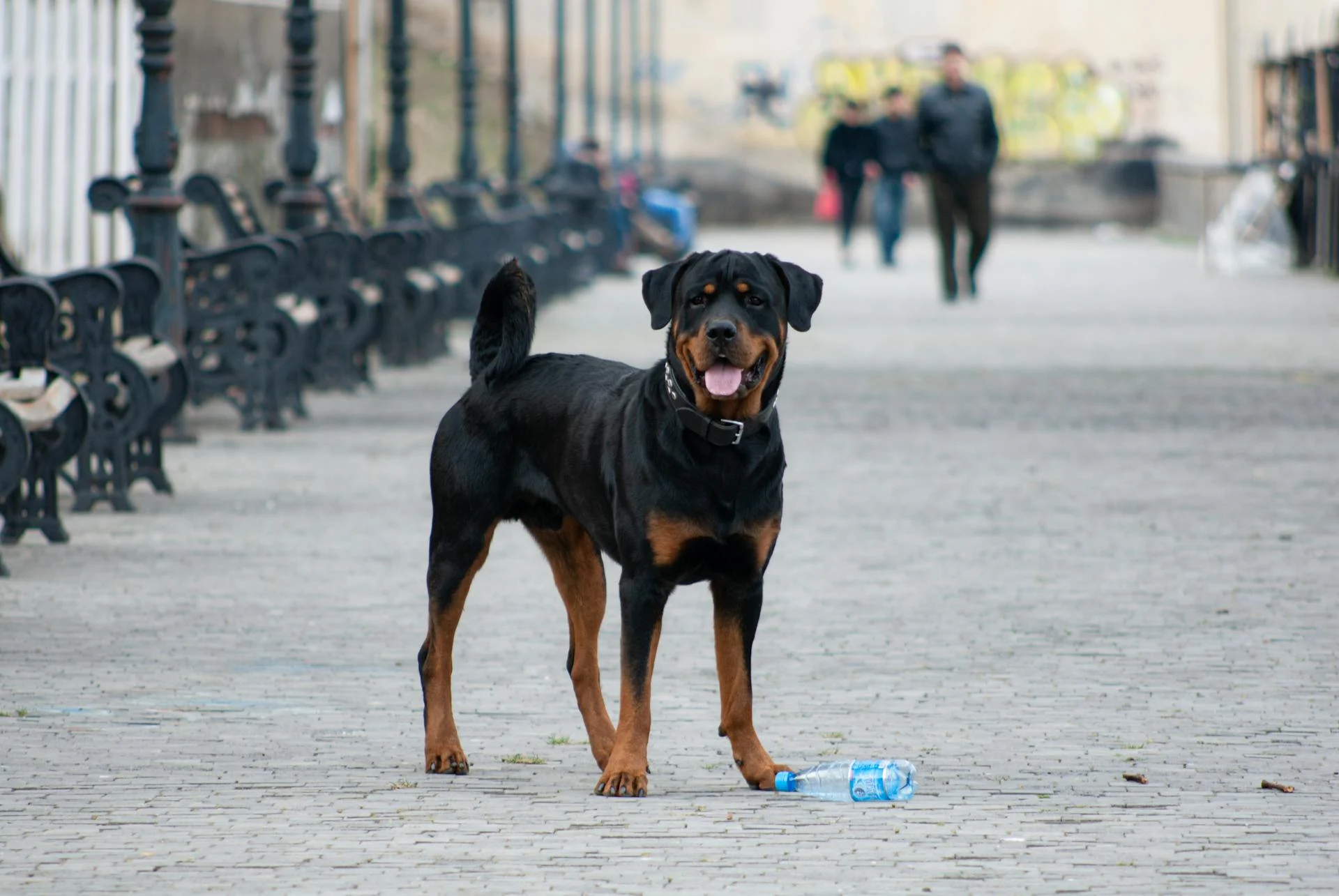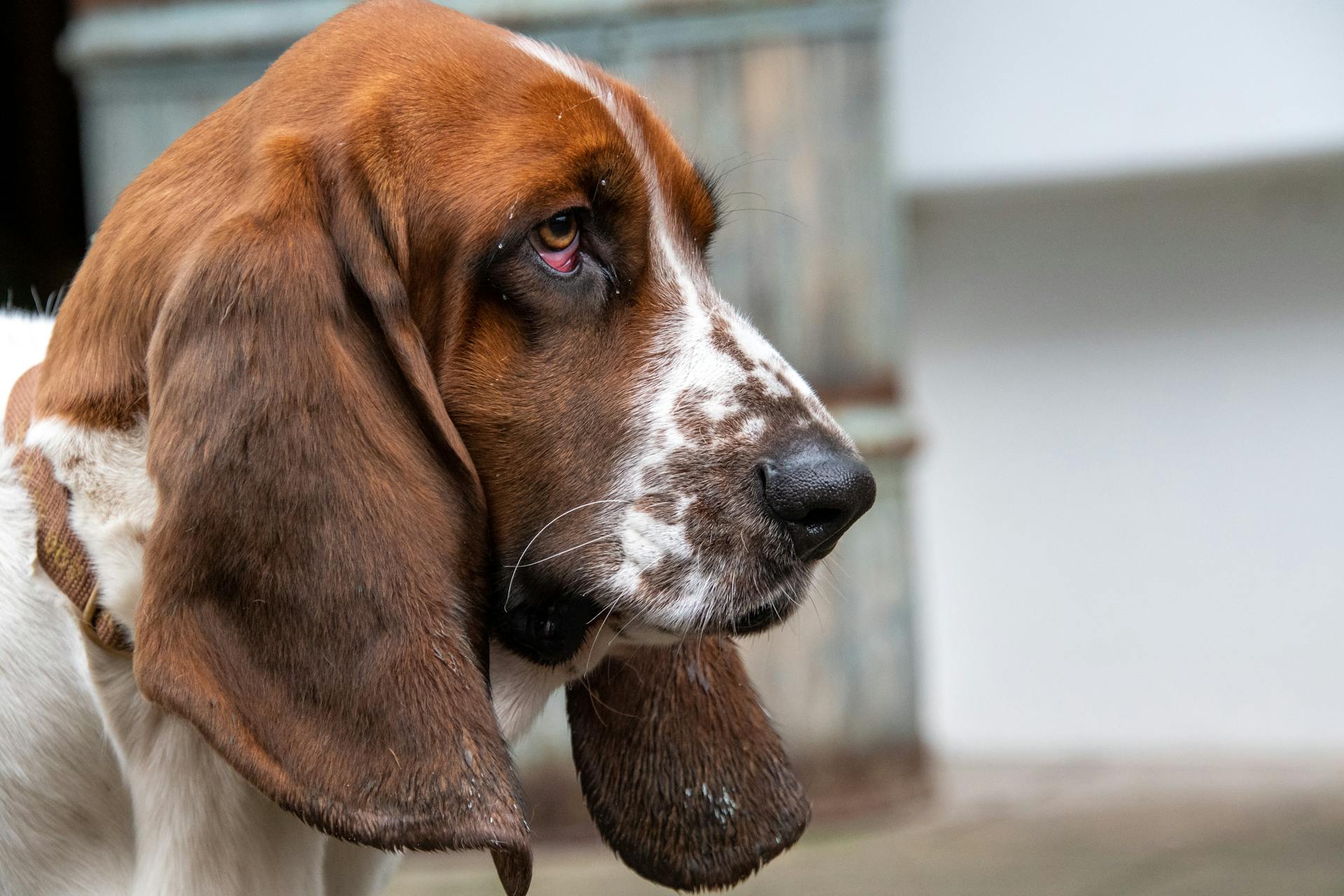
European Sighthounds have been around for thousands of years, with some breeds dating back to ancient civilizations.
The Greyhound, for example, is one of the oldest dog breeds, with a history that spans over 4,000 years.
These ancient breeds were bred for speed and agility, making them well-suited for hunting small game.
The Whippet, another European Sighthound, was originally bred in England in the 18th century as a smaller version of the Greyhound.
For your interest: Arabian Greyhound
History of European Sighthounds
In Russia, sighthounds for coursing were practiced since the 13th century, with well-organized hunting trials for the aristocracy that could last for days.
The Borzoi, a type of sighthound, was used by the Russian aristocracy to hunt wolves, accompanied by mounted hunters and sometimes scenthounds.
Sighthound History
The history of sighthounds is a rich and fascinating one. In ancient Greece, around 300 B.C., Xenophon made no mention of Greyhounds in his treatise "On Hunting", likely because the Greeks only had scenthounds at that time.
The Celtic culture flourished from central Europe to the British Isles and Ireland, taking their dogs with them and leaving offshoots of the Vertragus, the predecessor of the modern Greyhound. The Celts made no distinction among their sighthound varieties.
The poet Grattius wrote of the Celts' dogs, describing them as "swifter than thought or a winged bird" and "pressing hard on beasts it has found." The Greeks were impressed by the Celtic Greyhound's hunting abilities and wanted it for their own.
In Spain, the Galgo was a variant of the Vertragus, while in the British Isles, a wide range of sighthounds in various sizes and coats emerged, including the giant Wolfhound and the Whippet-sized "Tumblers." Almost all of these Celtic sighthounds have disappeared over the years.
The Scottish Deerhound remains in its ancient Celtic form, a testament to the enduring legacy of the Celts' sighthounds.
You might like: Hungarian Greyhound
The Irish Wolfhound
The Irish Wolfhound is a giant Celtic sighthound that was bred to destroy wolves.
This breed did its job so well that it had all but gone extinct by the end of the 18th century.
Without a job to do, breeders ceased to produce them.
Through the efforts of dedicated breeders, the Irish Wolfhound was recreated in the 19th century in its present form.
Suggestion: Bouvier Des Flandres Breeders
Breed Formation and Development
The European sighthounds have a rich history, and understanding their breed formation is key to appreciating their unique characteristics. The first Russian Borzoi breed standard was drawn up in 1888.
Exhibitions for sighthounds were held in Moscow as early as 1874, and the first pedigree book appeared in 1902, recording 15 dogs. This early documentation is crucial in tracing the breed's ancestry.
However, the breed's popularity declined in Russia after the Bolshevik Revolution in 1917, as it was seen as a symbol of the aristocracy.
A fresh viewpoint: Breeds of Sighthounds
The Not So Ancient
The Greyhound's ancient heritage is not as old as we thought. It originated from Celtic herding dogs.

The Celts introduced the Greyhound into Western Europe as they migrated out of their homeland. They settled in central Europe, Spain, and the British Isles.
A book written by John Henry Walsh in 1853, "The Greyhound", made a clear case for a Celtic origin for the breed. This was long before modern DNA analysis confirmed it.
The Greyhound's Celtic roots place it within the European wolf clade. This means it shares a common ancestor with other breeds in this group.
The ancient Greeks were great traders along the Mediterranean coast, but they didn't know the Greyhound until 200 B.C. This is when they first encountered the Keltoi, a tribal culture from the north.
Broaden your view: Spanish Greyhound
Breed Formation
The Russian Borzoi breed has a fascinating history. The first Russian Borzoi breed standard was drawn up in 1888.
Exhibitions for sighthounds were held in Moscow as early as 1874. This marked the beginning of the breed's development.
The first pedigree book appeared in 1902, recording 15 dogs. This was a crucial step in establishing the breed's identity.
However, the breed's popularity declined in Russia after the Bolshevik Revolution in 1917. The Bolsheviks saw the breed as a symbol of the aristocracy and almost decimated it.
Enough Borzois had been taken to Western European countries and America in the late 19th century for the breed to establish itself outside of Russia. This helped to save the breed.
A Soviet soldier named Constantin Esmont played a key role in the breed's revival. He convinced the Soviet government of the value of sighthounds in hunting.
As a result, the sighthounds were allowed to be bred again in Russia. The favorite sighthound in Russia is still the Hortaya Borzaya or Kort.
Borzoi: Elegant Hound
The Borzoi is an elegant hound that originated in Russia. They were bred to hunt small game like rabbits and hares.
In 1993, Terra and her mother acquired their first Borzoi in the United States, after moving from St. Petersburg, Russia. This suggests that the breed was popular enough to be kept as a pet in different parts of the world.
The Borzoi's elegant appearance is just one aspect of the breed. They're also known for their power and ability to run at high speeds.
Their speed and agility made them well-suited for hunting, and they were often used for this purpose in Russia.
About the Galgo Español
The Galgo Español is an ancient breed that originated in Spain, specifically bred for hunting small game. It's believed to have descended from the sight hounds of the Iberian Peninsula.
The breed's name, Galgo Español, translates to "Spanish Greyhound" in English. This name reflects the breed's origins and characteristics.
One of the key features of the Galgo Español is its speed, with some dogs reaching up to 45 miles per hour. This speed is crucial for hunting small game, such as rabbits and hares.
You might like: Pit Bulls Real Name
The Galgo Español is a sight hound, meaning it relies on its eyesight to track and chase prey. This is reflected in its physical characteristics, including its slender build and long legs.
The breed is relatively small, with males weighing between 50-70 pounds and standing between 23-27 inches tall at the shoulder. Females are slightly smaller.
Despite its small size, the Galgo Español is a powerful and athletic breed, well-suited for its original purpose as a hunting companion.
You might enjoy: Dogo Español
Live: Breed Specific Presentation
Breed Specific Presentation is a great way to learn about specific breeds of dogs. Laura Reeves hosted a live seminar on sighthounds from the Harvest Moon Cluster.
The seminar was sponsored by the Saluki Club of Greater San Francisco. This tells us that organizations dedicated to specific breeds can be a great resource for learning about them.
Laura Reeves talked about sighthounds during the seminar. Sighthounds are a type of dog bred specifically for their speed and ability to chase prey.
The entire seminar can be watched and listened to online. This is a great way to learn about sighthounds and other breeds in a more in-depth way.
Mediterranean Sighthound Breeds
The Mediterranean sighthound breeds have a fascinating history, and recent genetic studies have shed new light on their origins. The Ibizan Hound and the Pharaoh Hound, which were once thought to have an ancient past, have been found to be more recent re-creations.
These breeds, along with others like the Cirneco dell'Etna, the Portuguese Podengo, and the Podenco Canario, are part of a larger group of sighthounds that originated in the Mediterranean area. More DNA studies are needed to gain a complete picture of their genetic history.
The indigenous populations of South Africa, Namibia, and Zimbabwe have native dogs with unique characteristics, such as ridges of backward-growing hair extending from behind the withers to their hip bones.
Sighthound Characteristics
European sighthounds are built for speed and agility, with long legs and a lean, athletic build. They typically weigh between 25-45 pounds.
Their slender bodies are designed for quick turns and sharp changes in direction, making them well-suited for chasing small game.
Temperament
The borzoi is a quiet breed, barking only very rarely. They have a calm demeanor and are not naturally inclined to raise the alarm on sight of a human intruder.
Borzoi have a strong instinct to chase things that run from them, including cats and small dogs. This is a result of their breeding as hunters.
Their quiet nature makes them a great fit for families with small pets or for those who live in apartments, as they won't disturb the neighbors with excessive barking.
Sighthounds: Commonalities and Differences
Sighthounds are a unique group of dogs that share some common characteristics. They have remained largely unchanged for thousands of years, with the basic type of sighthound still existing today.
One of the defining features of sighthounds is their athleticism, which allows them to quickly chase and harass prey. This athleticism is essential for their original purpose of hunting.
Sighthounds come in various shapes and sizes, with some being bred for specific tasks. The Borzoi, for example, is a large sighthound that resembles its Central Asian cousins, such as the Afghan Hound and Saluki.
Readers also liked: Sighthound
The Greyhound and the Saluki are considered the "ur" sighthound, the original and quintessential sighthounds. They are the foundation from which other sighthounds, like the Afghan Hound, have evolved.
Sighthounds have a unique coat type, with a long top-coat that is flat and sometimes wavy or curly. This coat helps them regulate their body temperature in different climates.
In the past, sighthounds were highly valued by aristocratic and wealthy people, who used them for hunting as a status symbol. They were also a symbol of beauty and elegance, as seen in the fondness of Queen Elizabeth I for coursing.
A different take: Flat Coat Doodle
Sighthound Types and Variations
The Mediterranean Sighthound Breeds are quite fascinating, and their genetic history is more recent than we thought. These breeds, such as the Ibizan Hound and the Pharaoh Hound, were assumed to have an ancient past, but DNA studies reveal they're actually more recent re-creations.
Sighthounds from the Mediterranean area include the Cirneco dell'Etna, the Portuguese Podengo, and the Podenco Canario, among others. More DNA studies are needed to gain a complete picture of their genetic history.
Sighthounds have remained the same for thousands of years, with the basic type remaining unchanged. They weren't breeds early on but different types of sighthounds, used for coursing and hunting before firearms became common.
Borzoi: Elegant and Powerful
The Borzoi is an epitome of elegance and power, originating from Russia where it was prized for its coursing abilities.
In Russia, Borzois were used for coursing, and they remain a popular breed today.
Queen Elizabeth I was fond of coursing, and it's likely she would have appreciated the Borzoi's speed and agility.
Terra and her mother acquired their first Borzoi in 1993 after moving from St. Petersburg, Russia to the United States.
Borzoi were once a necessary part of hunting, but with the advent of firearms, they became a status symbol.
Their beauty and power made them a favorite among the aristocracy, and they remain a beloved breed among sighthound enthusiasts.
The Whippet
The Whippet is a Celtic creation, specifically a modern one, resulting from the admixture of Greyhound and the now extinct White English Terrier.
Miners in the Midlands of England created the Whippet breed in the 19th century.
The Whippet is a breed that I'm grateful to have in my life, and I think the ancient Celts would approve of its eager nature.
This sighthound is a testament to the ingenuity of its creators, who bred it for its unique characteristics.
Frequently Asked Questions
What is the best sighthound?
There isn't a single "best" sighthound, as each breed excels in its own unique way. However, the Afghan Hound is often considered a top contender due to its distinctive appearance and impressive hunting abilities.
Featured Images: pexels.com


